Just holding a Japan Rail Pass entitles you to board any JR local or Shinkansen (like the Hakari or Sakura) with or without reserved seats. This makes it all too easy for a passholder to be comfortably transported (feels more like teleported at speeds of 300 kph) across most of Japan. One can see a lot of Japan in a couple of minutes but that's all you will get as these sleek white tubes slide through innumerable tunnels that seem to have been dug exclusively for them while lesser vehicles navigate around curvy hillsides. All destinations in a matter of hours and with several departures in an hour, reservation-anxiety (talk to any one who is a regular inter-city traveler on Indian Railways) is virtually non-existent. And, amazingly, no bag checks or x-ray machines to board these trains. It is a good thing to feel secure.
Just how secure the citizens of Hiroshima felt on that fateful August morning in 1945, one can only speculate. It was wartime and life was hard with austerity measures in full swing, as we learn from the exhibits in the Hiroshima Peace Center Museum. But whatever those hardships were, they could hardly have prepared them for what was to happen to them (and the world) by the events that happened that week. Declassified documents on display tell the chilling story of how cities were short listed after Japan (and not Germany) was chosen for the honor of the first recipient. And how proximity to the sea and clear weather on the morning sealed the fate of the unprepared city. And how the altitude of detonation was set at 600m to maximize loss and destruction. And how no air raids were allowed in the short listed cities so that the impact of the bomb can be measured without interference. One could recall the lines from Roger Waters' "Us and Them" - The general sat and the lines on the map moved from side to side - something very similar took place here with a remote enemy scouting locations based on geography and weather. However, the theme of the museum avoids any "Us and Them" posturing and prefers to focus on the tragedy and how to prevent it from happening again rather than pointing fingers.
The displays do not spare the Japanese their due share for their imperial ambitions and initiation of hostilities in the 15 years leading upto that week. But they do offer a counter to the argument that the first use of the A-bomb in history was necessary to halt further loss of life in the continuing war. They allude to the fact that Japan was already weakened and close to surrender and would have complied if they had prior knowledge of the weapon that was being aimed at them. The language used in the communications, while understandably typical, reveal the underlying political expedient of having to explain why 2 bn dollars were spent on an unnecessary scientific project.
The museum has been constructed with a lot of care and sensitivity and is situated close to the hypocenter of the bomb. The peace park holds several monuments and the iconic Dome that has been carefully preserved to leave it in the state that it was after the bombing. Of particular interest to us was the panel of letters written by the Mayor of Hiroshima to every head of state that conducted a nuclear test since. We read with interest the texts sent to Mrs. Gandhi (1974) and Mr. Vajpayee (1998). These were among the many other letters sent frequently to the US, USSR/Russia, France, Britain, Israel.
Surprisingly, there were several displays on the science of nuclear weapons. The city of Hiroshima has spared no effort to educate visitors on the exact principles of physics which decimated their population in an instant. Neutrons colliding with nuclei setting off chain reactions releasing further neutrons which in turn and so on. The effects of radiation, heat, black rain are all clinically described letting the visitors process it any way they want to.
The registry of victims displayed in the museum showed the count to be 18302 today. Visitors are invited to feel the horror by touching objects taken from the site (melted glass bottles, stone surface bubbles, etc.) and are assured that it is safe to do so. Clearly, the purpose here is not to sensationalize but to make visitors feel the event as something that is real despite the passage of decades and the present day appearance of a peaceful green urban park that is in place today. The modern city of Hiroshima has long shed the burden of its infamy. Its 1+ million residents live in a city that has rebuilt itself in rapid time and has moved on. Tour buses full of uniformed school kids visit the museum regularly and there were a few today. What do they think? How did the world react to the news on August 6, 1945? What did people in our hometowns think? What happened between the 6th and the 9th when an even larger bomb was dropped on Nagasaki (2nd choice with the lucky Kokura escaping because of cloud cover)? Plenty of questions in our minds as we left Hiroshima bound for our last Japan stop - Fukuoka, in the island of Kyushu. More on that tomorrow.
Miyajima
Earlier in the day - A short train ride from the city is the much photographed Miyajima shrine that is on a small island off the mainland. The O'tori (a vermillion colored gate) makes a great photograph at full tide when it seems to rise from the water. The shrine behind is also built on stilts and looks like a temple floating on water during high tide. Our visit was a few hours before high tide on an overcast morning. The town and the surrounding hills in the area made for a pleasant morning's walk experiencing Japan.
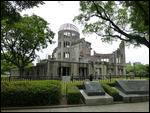
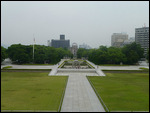
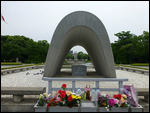
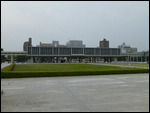
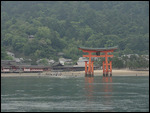
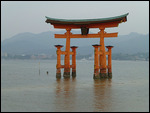
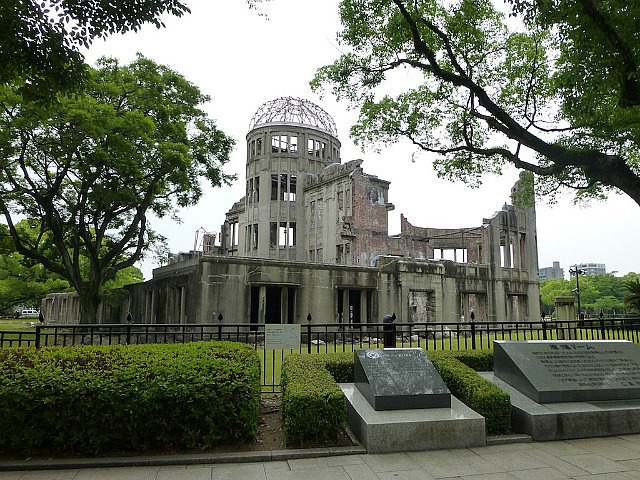

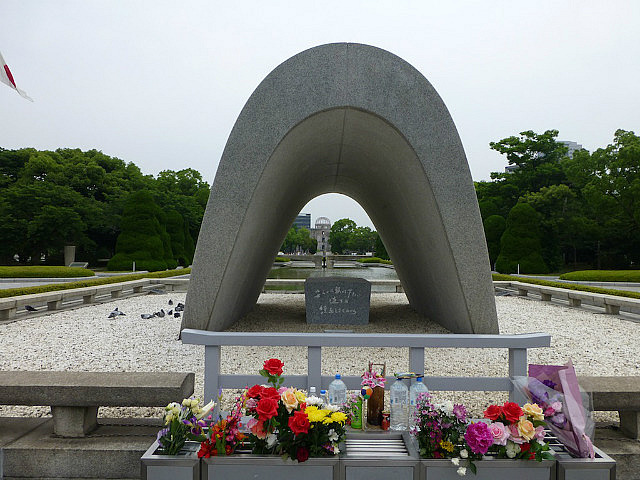
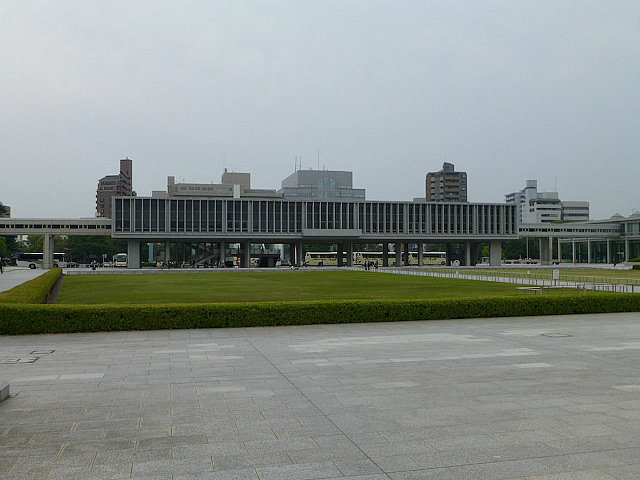
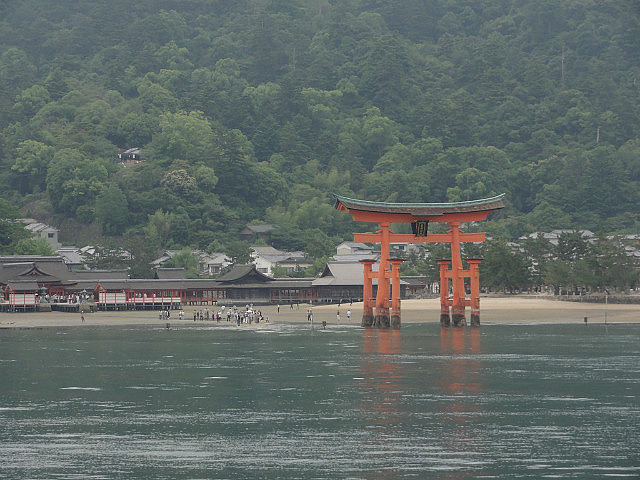
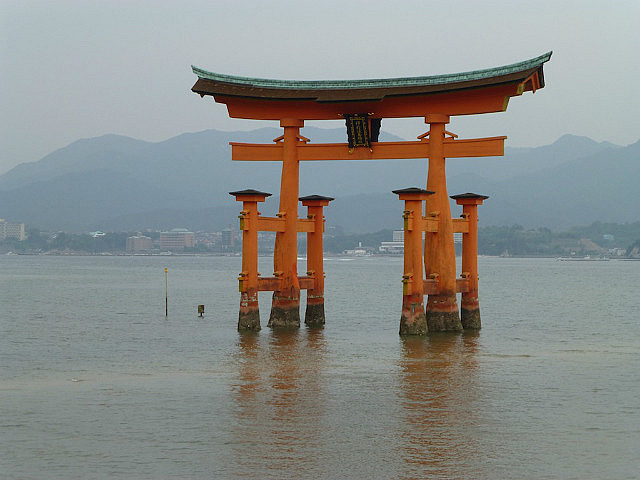
Comments